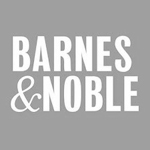While America descends into murderous chaos of economic disintegration, race gender and ethnic warfare and widespread criminality, survivors of a decades-long program, hidden in an isolated rural Midwestern area, intended to grow new humans from aborted fetuses are about to be exterminated by a confluence of forces who want any evidence of the program erased. Three Darwinian survivor teens, a powerful male, a brilliant but partly paralyzed male, and a gentle girl, all with only the derogatory names given them by the staff, struggle to save the few infants left after a raid by a black gang which exterminated almost all the other survivors, taking a few of the older girls if they were attractive. A physician who had participated in the program arrives at the camp just as the surviving teens are stopping the remaining staff from killing them. Having little experience outside the camp, the kids reluctantly link up with him. The disabled survivor had collected and saved the records of all the camp’s residents and struggled to fully understand them. The strongest of the survivors is absolutely dedicated to finding his first love, a mixed-race young woman who had a healthy child with the hero. She was carried off by the black marauders who destroyed the camp, after her baby was sold to a childless couple. Along with the survivors’ preserved records, there are books of the sale of the aborted fetuses on the East Coast the doctor wants retrieved and destroyed so the few survivors might be left alone. The companies and political forces involved also want the records and the murderous forces are unleashed against the kids. A dedicated Catholic priest in New York had learned of them and the camp and survivors and seeks them as well. The strong lad agrees to find the records, but first hunts down his love who is killed in his escape attempt. Another young woman is rescued by the two young men and they cannot abandon her to her circumstances. The disabled youth’s maniacal purpose is to find the parents of all those fetuses sent to the camp. The strong survivor agrees to go to the east coast because his baby was sold there and the parents of the young woman survivor lives in New York as well, though she is not much interested in her family, only the two young men and the babies they have saved. Under constant threat, he travels east, finds his toddler son and rescues him, learning of the survivors’ family heritage along the way. He discovers the surviving girl’s brother, an influential man, and connects with the Catholic Priest who was trying to find and preserve the records to stop abortion. He links up with the daughter of his East Cost host who desperately needs to escape her evil fiancé, ironically the grandson of the founder of the children’s camp, whom the hero kills in self-defense. The reluctant hero and his unwanted beautiful companion flee from the East Coast with his rescued toddler son, hunted by assassins hired by the girl’s fiancé’s grandfather. When they reach Chicago, the others have fled and the physician has been murdered. The fleeing pair follow them to Lake Superior where the disabled survivor has been killed. To stop the endless assault the young man bullies his way to the attackers’ home city Minneapolis where he discovers his own virulent family. After a violent cataclysm he gathers his ragged group and they flee to Canada to homestead. They find protection among two religious groups, refugees and survivors themselves who have established adjacent settlements in the middle of Canada, one Eastern Orthodox and one Pentecostal. They protect the group, enfold them into their communities, help them build and establish a home, as the priest and the young survivor’s brother, a New York politician, provide some influence and protection for the group. The hero finds safety and peace in family and ultimately in the children, they—who had been thrown away before birth—produce themselves, the most blessed of human activity.




